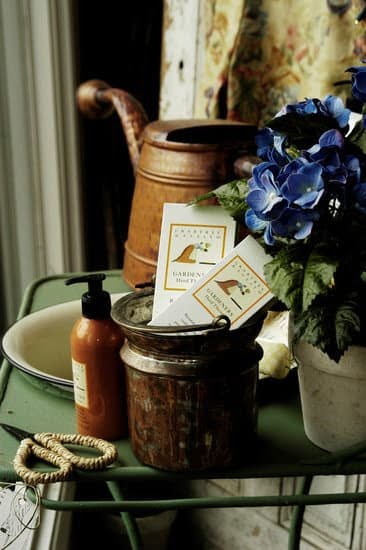Are you looking for landscape design ideas for your medium-sized yard? Creating a beautiful and functional outdoor space in a medium-sized yard can be a rewarding project. From choosing the right plants and trees to incorporating hardscaping and water features, there are countless ways to transform your medium yard into a stunning landscape. In this article, we’ll explore various landscape design ideas specifically tailored for medium-sized yards, providing you with inspiration and practical tips.
Assessing the layout and features of your medium yard is the first step in designing an attractive outdoor space. Understanding the dimensions of your yard, as well as any existing features such as slopes or focal points, will help you make informed decisions when it comes to plant selection and hardscaping. We’ll delve into this important aspect of landscape design to help you make the most of your medium-sized yard.
Choosing the right plants and trees is essential for creating a visually appealing and sustainable landscape. In this section, we’ll discuss how to select plants that thrive in medium-sized yards, as well as how to create balance and variety within your outdoor space. Whether you’re interested in native plants or ornamental trees, we’ll provide guidance on making the best choices for your medium yard landscape design.
Assessing Your Medium Yard Space
When it comes to landscape design ideas for a medium yard, it’s essential to first assess the space and understand its layout and features. By doing so, you can make the most of your medium yard and create a beautiful outdoor space that meets your needs. Here are some important steps to consider when assessing your medium yard space:
- Take measurements: Measure the dimensions of your medium yard, including the length, width, and any unique features such as curves or slopes.
- Identify existing elements: Take note of any existing elements in your yard, such as trees, shrubs, and structures like sheds or fences.
- Consider sunlight and shade: Observe how sunlight moves across your yard throughout the day to determine where the best spots are for planting and outdoor living areas.
- Check for drainage issues: Assess how water flows through your yard during rainstorms to identify any drainage issues that need to be addressed in your design.
Understanding the layout and features of your medium yard will help you determine the best approach to take when designing your landscape. Once you have a clear understanding of your space, you can move on to selecting the right plants, trees, hardscaping elements, water features, lighting, and maintenance strategies to bring your medium yard landscape design ideas to life.
By taking this proactive approach in assessing your space, you can ensure that your landscaping project is both functional and visually appealing.
Choosing the Right Plants and Trees for Medium Yard Landscape
When it comes to choosing the right plants and trees for a medium yard landscape, there are several factors to consider. The size of the yard, the climate, and the amount of sunlight are key elements that will influence your decision. Here are some tips to help you select the perfect greenery for your outdoor space:
- Consider the size and shape of your yard: Before choosing plants and trees, take into account the layout of your medium yard. Are there any existing structures or features that could affect the growth of certain plants? Make sure to select varieties that will thrive in your specific environment.
- Take into account the climate: Different plants have different temperature and water requirements. Research which species are best suited for your local climate and soil conditions. This will ensure that your landscaping remains vibrant and healthy throughout the seasons.
- Think about sunlight exposure: Some areas of your medium yard may receive more sunlight than others. Choose shade-loving plants for those spots that don’t get as much sun, and opt for sun-loving varieties for areas with ample light.
In addition to these considerations, it’s important to select a mix of plants and trees that offer visual interest, color variation, and different textures. For a medium-sized yard, aim for a balance between tall trees, mid-sized shrubs, ground cover, and colorful flowers.
Lastly, when selecting trees, think about their eventual height at maturity as well as their root systems. You want to avoid planting large trees too close to structures or utilities in order to prevent future complications.
By assessing these factors carefully, you can create a balanced and visually appealing plant selection for your medium yard landscape design ideas.
Creating Functionality With Hardscaping
When it comes to medium yard landscape design, creating functionality with hardscaping is essential in maximizing the space and creating an inviting outdoor environment. From paths and patios to outdoor living spaces, hardscaping plays a crucial role in shaping the overall layout and flow of your medium yard.
Designing Functional Paths
One of the key elements of hardscaping in a medium yard is the creation of functional paths that connect different areas of the outdoor space. Whether you opt for natural stone pathways or paver walkways, the design should be carefully planned to ensure easy navigation while adding visual interest to the landscape. Consider curving pathways for a more organic feel or straight paths for a modern look.
Creating Inviting Patios
A well-designed patio can serve as an extension of your indoor living space, providing an area for dining, entertaining, and relaxation. When planning your patio hardscape, consider factors such as size, shape, material, and location within the yard. Incorporating elements such as outdoor furniture, fire pits, or pergolas can further enhance the functionality and aesthetic appeal of the patio area.
Designing Outdoor Living Spaces
Outdoor living spaces are becoming increasingly popular in medium yard landscape design, offering homeowners a place to unwind and enjoy nature right in their own backyard. Whether it’s a cozy nook with comfortable seating or a full-fledged outdoor kitchen and dining area, thoughtful hardscaping is essential in creating these functional and inviting spaces. Consider incorporating features like built-in benches, retaining walls for seating, or even an outdoor fireplace for added warmth and ambiance during cooler evenings.
Incorporating hardscaping elements such as paths, patios, and outdoor living spaces into your medium yard landscape design can help create both functionality and beauty in your outdoor space. With careful planning and attention to detail, you can transform your medium yard into an inviting oasis that reflects your personal style and enhances your enjoyment of the great outdoors.
Maximizing Space With Vertical Landscaping
When designing a medium yard landscape, maximizing space is essential in creating a visually appealing and functional outdoor space. One way to achieve this is through vertical landscaping, which involves incorporating trellises, arbors, and climbing plants into your design. These elements not only add aesthetic appeal but also make the most of limited space by drawing the eye upward and creating a sense of depth.
Using Trellises and Arbors
Trellises and arbors are versatile features that can serve as focal points in your medium yard landscape. They can be used to define different areas within the yard, such as creating a designated seating area or framing an entryway.
When choosing trellises and arbors, consider the style of your home and existing landscape design to ensure a cohesive look. Additionally, think about the plants you want to grow on them and make sure they are suitable for the amount of sunlight and soil conditions in your yard.
Incorporating Climbing Plants
Climbing plants are an excellent addition to any medium yard landscape, as they provide color, texture, and fragrance while taking advantage of vertical space. Popular options for climbing plants include wisteria, roses, clematis, and jasmine. Before selecting climbing plants for your trellises or arbors, consider their growth habits and maintenance requirements. Some climbing plants may require regular pruning or training to ensure they grow where you want them to.
Care and Maintenance
Once you have incorporated trellises, arbors, and climbing plants into your medium yard landscape design, it’s important to establish a regular maintenance routine to keep them looking their best. This may include pruning climbing plants to control their growth or inspecting trellises and arbors for any signs of wear or damage. Additionally, keep an eye out for any invasive tendencies of certain climbing plants that may impact other elements of your landscape design.
Incorporating vertical landscaping elements into your medium yard landscape design can add height, visual interest, and functionality to your outdoor space. By carefully selecting trellises, arbors, and climbing plants that complement your overall design vision while considering their care needs will result in a stunning landscaped yard that maximizes every inch of available space.
Incorporating Water Features
Water features can add a sense of tranquility and elegance to any landscape, including medium-sized yards. Fountains, ponds, and waterfalls are not only visually appealing, but they also create a soothing atmosphere that can enhance the overall ambiance of your outdoor space. When incorporating water features into your medium yard landscape design, there are several factors to consider to ensure that they complement the existing layout and contribute positively to the overall look and feel of the space.
First and foremost, it’s essential to assess the size and dimensions of your medium yard to determine the appropriate scale of water feature that will best fit the available space. For medium-sized yards, smaller fountains or ponds may be more suitable than large waterfalls or expansive bodies of water. The goal is to create a harmonious balance between the water feature and the surrounding landscape without overwhelming the area.
In addition to size considerations, it’s also important to think about maintenance and upkeep when choosing water features for your medium yard landscape. While elaborate ponds and cascading waterfalls may be visually stunning, they often require more maintenance in terms of cleaning, balancing chemicals, and caring for aquatic plants or fish. On the other hand, a self-contained fountain or small reflecting pool may be easier to maintain while still adding a touch of sophistication to your outdoor space.
| Water Feature | Considerations |
|---|---|
| Fountains | Size, style, sound level |
| Ponds | Maintenance requirements, wildlife attraction |
| Waterfalls | Scale, location within the landscape |
Lighting for Ambiance and Safety in Medium Yard Landscaping
When designing the landscape for a medium-sized yard, it’s essential to consider both aesthetics and functionality. One crucial aspect of landscaping that often gets overlooked is lighting. Proper lighting can enhance the ambiance of your outdoor space and also provide safety during the evening hours. Whether you want to illuminate pathways, highlight certain features, or create a cozy atmosphere for outdoor gatherings, the right lighting design can make a significant difference in your medium yard landscape.
When it comes to lighting options for medium yard landscaping, there are several choices to consider. For pathways and walkways, low-voltage LED lights are an excellent option as they provide just the right amount of illumination without being too harsh. Additionally, spotlights can be used to showcase specific trees, plants, or architectural elements within the landscape. Consider incorporating solar-powered lights in areas where access to electricity may be limited.
In addition to enhancing the visual appeal of your medium yard landscape, proper lighting also plays a crucial role in ensuring safety after dark. Illuminating paths and steps with strategically placed lights can help prevent accidents and provide peace of mind when navigating the outdoor space at night. By carefully planning your lighting design, you can achieve both practicality and beauty in your medium yard landscape.
| Landscape Lighting Option | Benefits |
|---|---|
| Low-voltage LED Lights | Provides subtle illumination for pathways without being too harsh |
| Solar-Powered Lights | Ideal for areas with limited access to electrical outlets |
| Spotlights | Showcases specific features within the landscaping design |
Maintenance Tips for a Beautiful and Sustainable Medium Yard Landscape
Maintaining a medium yard landscape can be both rewarding and challenging. To keep your outdoor space looking beautiful and sustainable, it’s crucial to stay on top of regular maintenance tasks. From mowing the lawn to pruning trees and shrubs, there are several essential maintenance tips to consider for a thriving medium yard landscape.
One important aspect of maintaining a medium yard landscape is to stay consistent with watering and fertilizing. Different plants and trees have varying water and nutrient needs, so it’s essential to understand the requirements of each one in your landscape. Additionally, consider using a soaker hose or drip irrigation system to efficiently water your plants and minimize water waste. Regularly fertilizing your plants with organic or slow-release fertilizers will also help keep them healthy and vibrant.
Another crucial maintenance task for a beautiful medium yard landscape is lawn care. This involves mowing the lawn at the appropriate height for the type of grass you have, as well as aerating and dethatching the soil as needed. Keeping your lawn well-maintained not only enhances the overall look of your landscape but also promotes healthy growth.
Additionally, regular upkeep of hardscaping elements like paths, patios, and outdoor living spaces is important for both aesthetics and safety. Clearing debris, power washing surfaces, sealing pavers, and repairing any damaged areas will help ensure these features remain functional and visually appealing in your medium yard landscape. By staying proactive with maintenance tasks, you can enjoy a beautiful and sustainable outdoor space for years to come.
Conclusion
In conclusion, designing a medium yard landscape can be both challenging and rewarding. By understanding the layout and features of your space, choosing the right plants and trees, incorporating hardscaping and vertical landscaping elements, adding water features, and implementing lighting for ambiance and safety, you can create a beautiful outdoor space that maximizes functionality while also being aesthetically pleasing.
It’s important to remember that maintaining a medium yard landscape requires regular upkeep to ensure its beauty and sustainability. This can include pruning, watering, fertilizing, and general landscaping maintenance. By staying on top of these tasks, you can continue to enjoy your outdoor oasis for years to come.
Bringing your medium yard landscape design ideas to life is a process that requires patience and creativity. Whether you prefer a formal garden with structured pathways or a more naturalistic setting with meandering paths and wildflowers, there are endless possibilities for creating a stunning landscape in your medium-sized yard. With careful planning and attention to detail, you can transform your outdoor space into a true haven.
Frequently Asked Questions
How Do I Design My Backyard Layout?
Designing your backyard layout involves considering the size and shape of your space, the existing features like trees or slopes, and your desired activities and aesthetic. Start by creating a basic sketch of your yard, then consider elements like seating areas, pathways, plants, and any structures you may want to include.
Take into account factors like sunlight and drainage when placing different elements in your design.
Is There a Free App to Design Landscape?
Yes, there are free apps available for designing landscapes. Some popular options include iScape, Home Outside, and Landscaper’s Companion. These apps typically allow you to upload a photo of your outdoor space and then add various landscaping elements such as plants, hardscapes, and other features to create a visual representation of your design ideas.
What Are the 7 Steps to Landscape Design?
The 7 steps to landscape design typically involve: 1) conducting a site analysis to understand the existing conditions; 2) developing a functional diagram or rough sketch of the planned outdoor space; 3) creating a preliminary design that includes the placement of major elements; 4) evaluating the preliminary design’s feasibility and making any necessary adjustments; 5) developing a final landscape plan including all details and specifications; 6) obtaining cost estimates for materials and labor; and 7) implementing the plan through construction and installation.
Each step is important for creating an effective and well-thought-out landscape design.

Welcome to my gardening blog! I am passionate about plants and enjoy sharing my knowledge and experiences with others. In this blog, I will write about everything related to gardening, from tips on how to get started to updates on my own garden projects.





